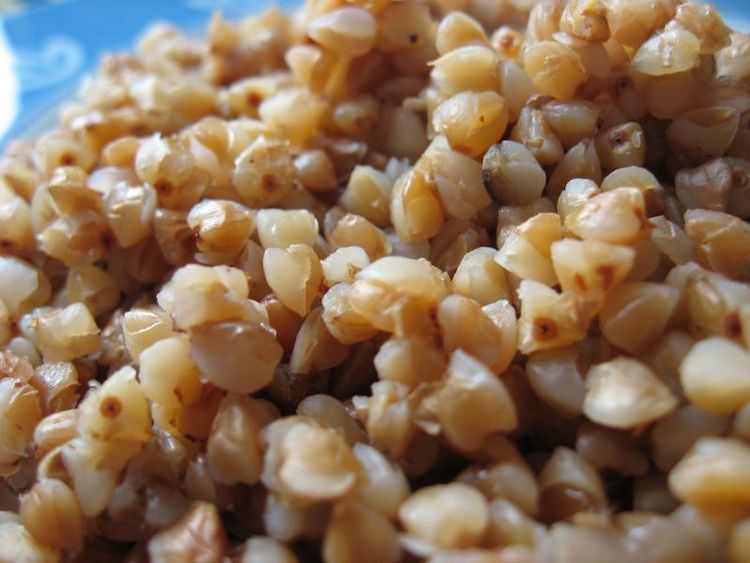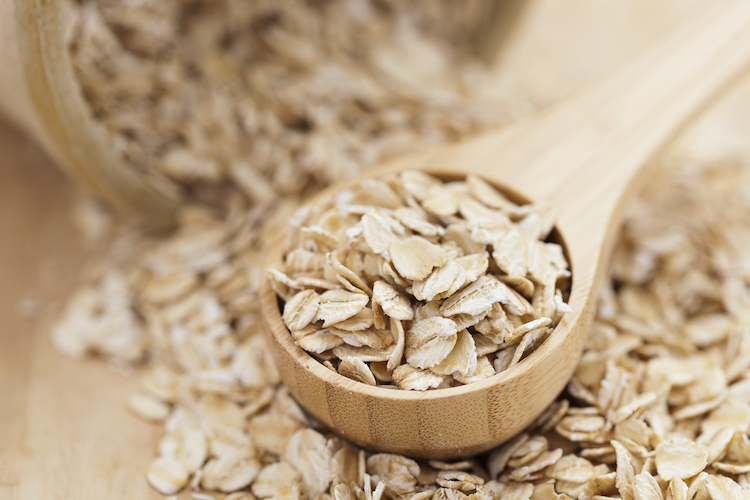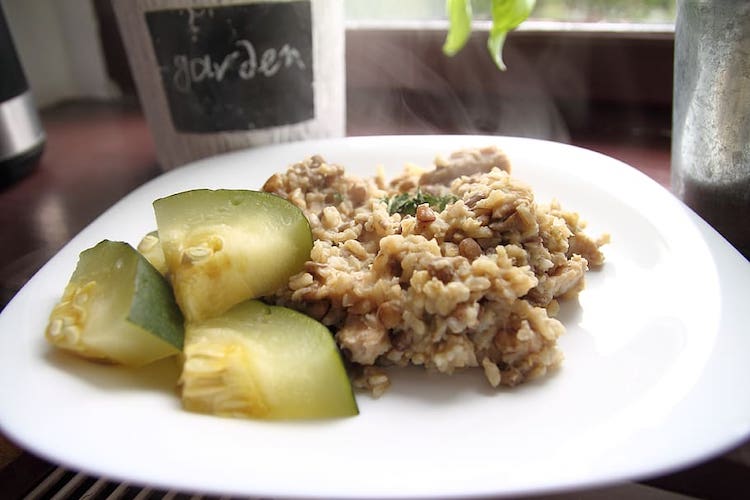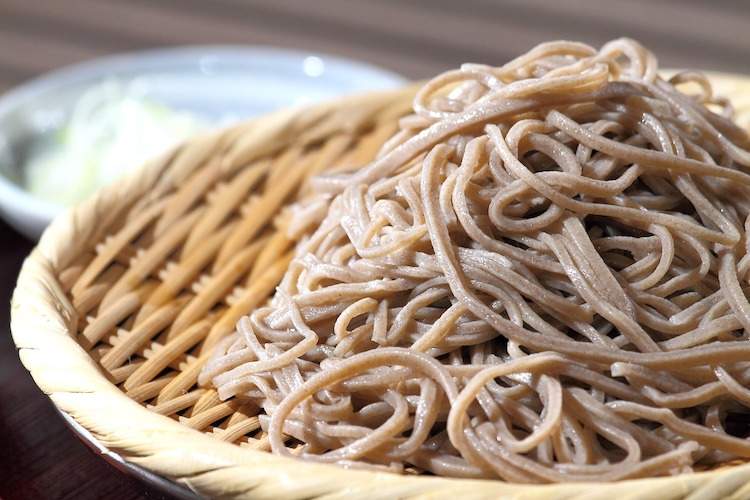Should You Be Eating Buckwheat?
Buckwheat is one of the most nutrient-dense foods that you probably know very little about. It’s finally gaining some momentum in the U.S., Europe, and Canada as a gluten-free, nutrient-rich, antioxidant-filled grain, and is considered by many to be a superfood, due to its high polyphenol content.
Consumed in Asia for centuries, buckwheat is considered an “ancient grain.” Many people are surprised to learn that it’s actually gluten-free. Buckwheat has a unique amino acid composition that allows it to help lower cholesterol, improve digestion, and act as an anti-hypertensive. So, should you be eating buckwheat…?

Buckwheat Nutrition Facts
One cup (168 grams) of cooked buckwheat groats contains approximately:
- 155 calories
- 7 grams protein
- 5 grams fiber
- 5 grams carbohydrates
- 1 gram fat
- 7 mg magnesium (21% DV)
- 118 mg phosphorus (12% DV)
- 7 mg manganese (34% DV)
- 1 mg zinc (7% DV)
- 2 mg copper (12% DV)
- 3 mg iron (7% DV)
- 6 mg niacin (8% DV)
- 6 mg folate (6% DV)
- 1 mg vitamin B6 (6% DV)
Buckwheat is actually a seed, even though it’s usually referred to as a grain, similar to rolled oats or brown rice. It’s NOT wheat, so let’s just clear that up right now. The buckwheat seed is usually called “groats” or “kasha”. It’s high in fiber and protein, but higher in starch and lower in fat than the other seeds we typically eat.
The groats contain:
- Tannins
- D-chiro-inositol
- Phenolic compounds and flavonoids including quercitin, chlorogenic acid, orientin, vitexin, isovitexin, rutin, and isoorientin
- Fagopyritols (including galactosy derivatives of D-chiro-inositol)
- Amino acids, including threonine, tryptophan, lysine, and the sulfur-containing amino acids
Although scientifically classified into three types of species, the types most often eaten by humans are just referred to as raw “buckwheat groats.” These can also be made into flour that tends to have an earthy, nutty flavor.
Buckwheat is usually found in foods such as soba noodles, buckwheat pancakes, and kasha stir-fry. They can be used in soups and stews, salads, muffins, breads, and binding or coating in meatballs and patties.

The Benefits Of Buckwheat
Easily Digestible Protein
Buckwheat contains 11 to 14 grams of protein for every 100 grams, giving it more protein than any form of corn, millet, rice, or wheat. Not quite as much as beans and legumes or quinoa, but still very respectable.
Because it contains 12 amino acids, two of which are the essential amino acids arginine and lysine, it’s a great source of protein for vegans and vegetarians who don’t get those amino acids from animal-based meat.
Non-Allergenic And Gluten-Free
It’s a very safe alternative for people with Celiac disease or gluten allergies. Despite its name, remember, it’s NOT a grain, but a seed. So don’t confuse it with actual wheat, which is completely unsafe for people with gluten intolerances.
Lowers Cholesterol And Blood Pressure
Clinical studies suggest that buckwheat fights inflammation and cholesterol, which is responsible for cardiovascular disease. Some studies show that it works on raising the good form of cholesterol (HDL) and lowering the bad form (LDL) at the same time.
A Good Source Of Vitamins And Minerals
Minerals such as zinc, iron, manganese, magnesium, and folate further help improve digestion, defend against depression, and help with muscle growth and recovery. Buckwheat is also chock full of B vitamins, which helps boost energy and improve blood vessel function and circulation, as well as improving neurotransmitter signaling for fighting anxiety, headaches, and depression.
Lots Of Antioxidants
Buckwheat has many flavonoids and other antioxidants that help fight free radical damage, protect DNA and cellular function, and fight heart disease and cancer.
Helps Improve Digestion And Satiety
With its six grams of dietary fiber per one-cup serving, buckwheat helps you feel full longer at the same time as it promotes motility through the digestive tract – a double bonus.
When buckwheat is fermented as a sourdough bread starter, or even in alcoholic beverages, it acts as a nourishing, healthy bacteria – known as a prebiotic – inside the digestive tract.
Helps To Prevent Diabetes
Because of its low glycemic index, this complex carbohydrate doesn’t cause a large spike in blood sugar, but is absorbed more slowly into the body, creating a longer-lasting, more sustained level of energy.

Buckwheat vs Oats vs Quinoa
All three of these are gluten-free. Oats are grains, not seeds like buckwheat, but they have very similar effects on overall health. Quinoa and buckwheat are both starchy seeds and are considered very similar, with quinoa having slightly higher protein, carbs, iron, thiamine, magnesium, and calories.
How To Use Buckwheat And Where To Get It
Thanks to the gluten-free craze taking over the U.S., Canada, and Europe, buckwheat flour, groats, and grains are widely available in most grocery and health food stores. Be on the lookout for parboiled and dried groats or whole hulled grains, which are ready to cook with. Keep your buckwheat flour in the fridge or freezer, and use it as soon as possible so that it doesn’t go bad.
How To Cook It
To Soak And Then Sprout:
Soak dried hulls in a big bowl of water between 30 minutes and six hours. Wash and strain the dried groats, then leave them out in a dish somewhere they will get airflow.
Add 1 to 2 tablespoons of water to the dish to keep them slightly damp, but don’t cover them completely with water.
Let the dish sit out for two to three days, checking occasionally for sprouts. The sprouts will be anywhere from 1/8 to 2 inches long. When the majority of them have sprouted, rinse them well, drain them well, and store them in a jar in the fridge for up to seven days. Remember to rinse them daily to prevent mold growth.
Sprouting buckwheat is great because it reduces some of the enzymes that can make it tough for some people to digest in the ready-to-cook versions.
Cooking From Dried Buckwheat (Groats):
Rinse the groats well and combine one cup of buckwheat with two cups of water in a saucepan on the stove.
Simmer on low for 20 minutes, checking occasionally to make sure they’re plump and have a good texture. If they’re taking too long to absorb water and start to get mushy, strain some of the water off.
It’s best to introduce buckwheat into the diet slowly by eating smaller portions at first, as it’s such a high-fiber food. Be sure to accompany it with drinking lots of water to help aid digestion. On rare occasions, even though it’s gluten-free, some people still experience allergy-type symptoms, so be aware of that possibility.

History And Uses Of Buckwheat
Buckwheat has been used for thousands of years around the world; there are records of it having been grown in China as far back as 1,000 B.C., and harvested on the plains of southeast China and the Himalayas. It was actually the main staple food before rice became popular in Eastern cultures. It was especially popular in Asia and Russia.
It’s now starting to show a renewal in popularity, and there are currently several different types grown commercially around the world. It’s widely consumed in Canada, Ukraine, India, Nepal, China, Korea, Italy, Russia, and Japan.
Buckwheat has been used extensively in Traditional Chinese Medicine to support spleen and stomach function, lower blood pressure, treat constipation, and to strengthen “qi” – which is what the Chinese believe is vital energy.
It’s still recommended to treat digestive issues, hypertension, some skin conditions – such as lesions and wounds – dysentery, diarrhea, and various fevers.

Summary
- Buckwheat is absolutely gluten-free, making it ideal for Celiac and gluten-intolerance sufferers.
- It’s a seed, NOT a grain, although it acts in ways similar to grains.
- It’s used in recipes to make soba noodles, gluten-free baked goods, stir-fries, soups, stews, pancakes, and more.
- Benefits include helping prevent digestive disorders, inflammation, and heart disease.
